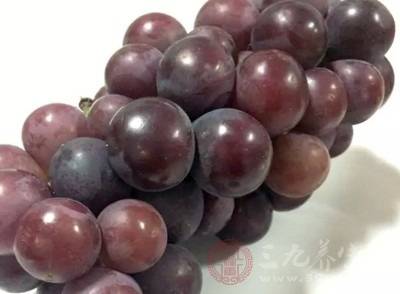Many young people nowadays neglect their health due to long working hours, leading to high blood lipids. Do you know what foods are good for lowering blood lipids? Are you familiar with natural remedies for treating high blood lipids? Let’s take a look at the dietary considerations for high blood lipids.
What to Eat to Lower Blood Lipids
Lowering blood lipids is simple; many foods in daily life are excellent choices for this purpose. However, it is essential not to consume them casually but regularly. Persistence in consumption will surely reduce blood lipids.
Fruits
Apple
Rich in pectin, dietary fiber, and vitamin C, apples have a significant lipid-lowering effect. They can lower low-density lipoprotein cholesterol levels and increase beneficial high-density lipoprotein cholesterol levels that are advantageous for cardiovascular health.
Grape
Grape juice and wine contain resveratrol, a natural substance for reducing cholesterol. Animal studies have shown that it can lower cholesterol, inhibit platelet aggregation, making grapes one of the best foods for individuals with high blood lipids.
Hawthorn
A key ingredient in many fat-reducing teas, hawthorns contain flavonoids that can dilate blood vessels, lower blood pressure, and cholesterol. Those with high blood lipids should eat more hawthorns as they can not only reduce blood lipids but also blood pressure, controlling hypertension, serving as a natural remedy for managing lipid issues.
Vegetables
Garlic
Containing allicin and selenium, garlic can reduce blood viscosity, decrease cholesterol content, prevent clot formation, and help increase high-density lipoprotein, which is beneficial for weight loss.
Seafood
Kelp
Rich in taurine and alginic acid, kelp can lower blood lipids and cholesterol in the bile.
Oyster
Abundant in trace element zinc and taurine, oysters can promote cholesterol breakdown, aiding in lowering blood lipid levels.
Mushrooms and Legumes
Shiitake Mushroom
Contributes significantly to lowering cholesterol and triglyceride levels while increasing high-density lipoprotein cholesterol in the body.
Adzuki Bean
Contains linoleic acid, saponins, phytosterols, effectively reducing serum cholesterol. The fiber content helps reduce sugar absorption, alleviates hunger, and aids in lipid metabolism.
Staple Foods
Oats
Rich in linoleic acid and β-glucan, oats are beneficial for preventing atherosclerosis.
Corn
Rich in calcium, phosphorus, selenium, lecithin, vitamin E, corn plays a role in lowering cholesterol levels.
Natural Remedies for Treating High Blood Lipids
1. Cook with Red Yeast Rice
Red yeast rice has long been considered a valuable health supplement in traditional Chinese medicine. Based on TCM theory, it can comprehensively regulate blood lipids, reduce total cholesterol, low-density lipoprotein cholesterol, triglycerides, increase high-density lipoprotein cholesterol, promote blood circulation, prevent atherosclerosis, hypertension, coronary heart disease, stroke, and other cardiovascular diseases.
2. Vinegar-Soaked Shiitake Mushrooms for Cholesterol Reduction
Soak shiitake mushrooms in clean water for a day to increase vitamin D content. Put them into a wide-mouth jar, pour in vinegar, refrigerate, and consume after a month. Vinegar-soaked shiitake mushrooms can reduce cholesterol levels, improve hypertension and atherosclerosis symptoms, prevent strokes, and are suitable for diabetics.
3. Vinegar-Soaked Peanuts
Put a pound of peanuts in a large jar, add half a pound of vinegar, seal the jar, and consume them after seven days.
4. Ginger Soup Weekly
Drinking a bowl of warm ginger soup on an empty stomach in the morning and evening is beneficial. It can help invigorate, improve sleep, and enhance overall well-being.
5. Black Fungus Tofu Soup
Prepare a soup with tofu, black fungus, chicken broth, ginger, scallions, salt, and sesame oil. Consuming this soup can be beneficial for managing lipid levels.
Dietary Considerations for High Blood Lipids
1. Drink Plenty of Water
Increased blood viscosity and reduced blood flow speed in high blood lipid individuals can lead to platelet deposition and thrombosis formation. Drinking more water helps dilute blood, alleviate blood viscosity, and maintain smooth blood circulation.
2. Opt for Healthier Cooking Methods
Avoid frying and pan-frying when preparing animal-derived foods. Steaming and baking (in an oven, not over direct flame) are preferable methods to allow oils to drip from the food.
Choose cooking methods such as cold mixing, stir-frying, boiling, stewing, and steaming with minimal oil, avoiding animal fats and using limited vegetable oils not exceeding two tablespoons per day, equivalent to 20 milliliters.
3. Increase Vegetable Intake, Control Staple Foods, and Consume Moderate Fruits
Favor leafy green vegetables like bok choy, kale, spinach, and colorful veggies like purple cabbage, eggplant, carrots. Limit starchy vegetables like potatoes, yams, taro, and lotus root.
Fruits and vegetables are rich in water, vitamin C, and dietary fiber. Vitamin C aids in lipid reduction, while dietary fiber impedes cholesterol absorption in the intestines, helping decrease blood viscosity. Fruit intake should not exceed 200 grams daily, opting for low to moderately sweet fruits.
Hawthorn has moderate lipid-lowering effects, and fungi like wood ear mushrooms and mushrooms also contribute to reducing lipids.
4. Incorporate Dairy, Legumes, and Their Products
Dairy products not only contain quality protein and vitamins but also serve as an excellent source of natural calcium. Opt for low-fat or skim milk for high blood lipid individuals. Legumes, rich in protein, unsaturated fatty acids, vitamin B1, B2, niacin, are traditional Chinese foods.
Conclusion: High lipid, blood sugar, and blood sugar are no longer exclusive to the elderly; the incidence among young people is increasing due to dietary habits. Whether or not you have high blood lipids, consuming foods that lower blood lipids is essential for preventive health management.


